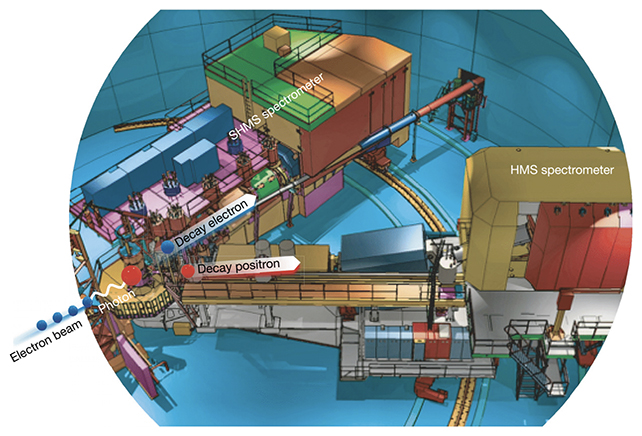The humble proton is a lynchpin of the material Universe. Its characteristics define chemistry, governing teams of electrons that build atoms into molecules, and molecules into dazzling complexity.
For all we understand of its behavior, the proton's internal structure is a chaotic mess of activity scientists are still deciphering.
A new experiment conducted at the US Department of Energy's Thomas Jefferson National Accelerator Facility sheds light on this mystery, revealing more about proton innards and indeed how matter itself is put together at the smallest scale.
Researchers from across the US were able to measure the movements of tiny fundamental particles called gluons that hold protons together. Formerly referred to as the proton's gluonic gravitational form factor, this measurement acts as a sort of window into the mass structure of the positively charged nuclear particle.
What the team discovered was that the radius of the proton's mass varied from the radius covering the distribution of its electrical charge, often used as a proxy for a proton's size. While those values wouldn't necessarily be expected to match, the differences between them can tell scientists more about how a proton is put together.
"The radius of this mass structure is smaller than the charge radius, and so it kind of gives us a sense of the hierarchy of the mass versus the charge structure of the nucleon," says Mark Jones, a senior staff scientist at the Thomas Jefferson National Accelerator Facility in Virginia.
As gluons lack charge and mass, their measurements must be indirectly taken, such as from the decay products of pairings of quarks and antiquarks known as mesons. The experiment involved an electron beam and a photon beam passing through liquid hydrogen, which resulted in interactions that produced a type of meson called a J/ψ particle.
By measuring the fallout from the J/ψ particles and comparing the results with theoretical models, the scientists calculated the different distributions of mass and electrical charge within a proton.
The greater radius of electrical charge means the mass of the proton is concentrated, suggesting some of the gluons may extend beyond the mass bearing quarks, possibly confining them.

Don't let the ubiquitous nature of the proton fool you. Under the hood it's a whir of weirdness, of quantum particles popping in and out of existence in ways that make it challenging to map. Knowing more about the structure of the proton's mass and charge builds on our fundamental understanding of the particles that make up the Universe around us.
There's still plenty of work to do though. These findings rely in part on the theoretical models mentioned in addition to experimental observations, and it's not clear yet exactly how proton mass is distributed and linked to gluon activity.
Future studies are already planned, including different instruments and experimental techniques, and a greater level of precision. Before too long, we may know exactly makes a proton tick.
"The bottom line for me – there's an excitement right now," says Meziani. "Could we find a way to confirm what we are seeing? Is this new picture information going to stick?"
"But to me, this is really very exciting. Because if I think now of a proton, we have more information about it now than we've ever had before."
The research has been published in Nature.
